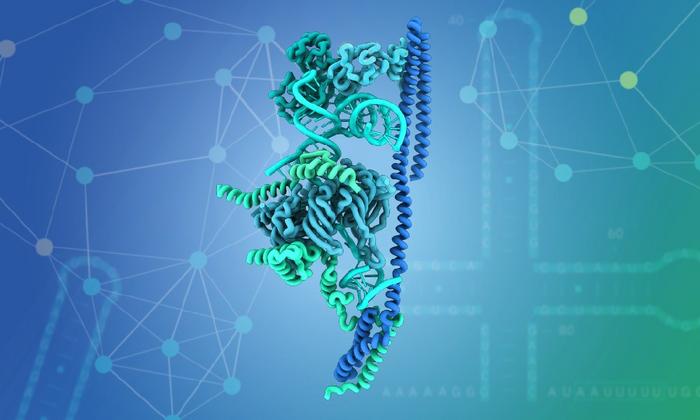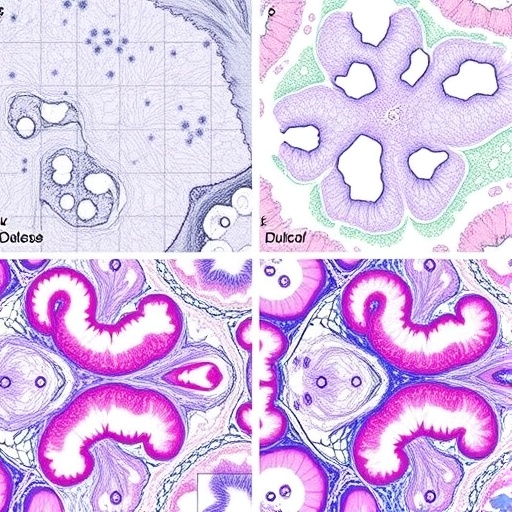
In the intricate landscape of eukaryotic gene expression, the emergence of protein-coding sequences from within the broader strands of genetic material hinges critically on a sophisticated process known as splicing. This biological phenomenon, fundamental to the proper expression of genes, is orchestrated by a large molecular entity known as the spliceosome. Recent advancements in our understanding of this complex have illuminated the distinctions between the major and minor spliceosomes, two pivotal players in the processing of pre-mRNA within human cells.
The spliceosome acts as a vital machinery, selectively excising the non-coding regions, or introns, from precursor mRNA transcripts. While the major spliceosome is relatively abundant and has been extensively studied, the minor spliceosome remains largely enigmatic, characterized by its lower prevalence and equally crucial role in gene expression. The identification of the minor spliceosome has long eluded researchers, but recent breakthroughs from the Galej Group at the European Molecular Biology Laboratory (EMBL) have shed light on its structure and function, specifically through the lens of the U11 small nuclear ribonucleoprotein (snRNP).
Understanding the structural biology of the minor spliceosome is crucial, as it maintains a pivotal role in the splicing pathway. The U11 snRNP, highlighted in the latest study published in the journal Molecular Cell, is one of five essential components of the minor spliceosome. This molecular assembly acts at the front lines of splicing, initiating the delicate process of intron selection which, after extensive investigation, has been identified as a critical factor for the expression of certain genes known as housekeeping genes. These genes play an indispensable role in cellular function and organismal survival, emphasizing the importance of studying this underappreciated spliceosomal counterpart.
The research conducted by the Galej Group involved meticulous biochemical and imaging techniques, particularly cryo-electron microscopy, which allowed for the determination of the U11 snRNP complex’s structure. The research elucidated a previously unknown mechanism by which this snRNP identifies the key ‘5’ splice site’—the specific locus on the pre-mRNA where intron removal begins. This structural analysis has brought significant insights into how the minor spliceosome operates in a cellular environment that is constantly inundated with a myriad of RNA sequences.
Spliceosomes, being large RNA-protein complexes, not only facilitate the removal of introns but also ensure that the splicing process occurs with remarkable precision. This precision is particularly vital for the recognition of rare minor introns, which represent a mere fraction of the total intron population within the transcriptome. The majority of introns processed by the major spliceosome are easily identifiable; conversely, minor spliceosomal introns pose a unique challenge due to their relative scarcity. The study emphasizes how the U11 snRNP uses a complex and finely-tuned architecture to navigate through the vast landscape of RNA, akin to locating a needle within a haystack.
Equally fascinating is the evolutionary narrative surrounding the minor spliceosome. It is posited that the major and minor spliceosomes diverged over 1.5 billion years ago, an evolutionary timeline that stretches the imagination and indicates a deep-rooted presence in eukaryotic cells. This evolutionary separation invites consideration of how these two spliceosomal systems have adapted to fulfill their respective roles in gene expression across various life forms. The work undertaken by the Galej Group not only contributes to our appreciation of this evolutionary tale but also lays the groundwork for extending research into other components of the minor spliceosome.
As the team’s research continues, it remains focused on uncovering additional insights into the splicing process, including the steps that follow the recognition of the intron. The transition from intron identification to its eventual excision is a complex sequence of events, with potential implications for understanding not only fundamental biology but also the pathological consequences of spliceosomal malfunctions that can lead to genetic disorders. This further exploration is underscored by Zhao’s recent award of the prestigious Marie Skłodowska-Curie grant, which will support ongoing investigations into the intricacies of the minor spliceosome’s functions.
If the major spliceosome has long been the star of splicing research, the minor spliceosome is now beginning to capture the spotlight. The emphasis on this molecular machinery opens doors to future research possibilities that may unearth novel therapeutic avenues for genetic disorders linked to aberrant splicing mechanisms.
Ultimately, the revelations stemming from the Galej Group’s research not only enhance our comprehension of the spliceosome’s structural diversity but also underscore its evolutionary significance in the grand scheme of molecular biology. The findings extend far beyond academia, potentially influencing prospective developments in medical science aimed at curing genetic disorders. As researchers build upon these insights, the world eagerly anticipates the outcomes of this exciting field, where answers to longstanding biological questions may redefine our understanding of genetics and human health.
The journey of understanding spliceosomal structures and functions has just begun, and with every new discovery, the tantalizing prospect of unraveling the complexities of gene expression looms larger. As we delve deeper into the inner workings of these molecular machines, we inch closer to unlocking the secrets of life encoded within our DNA.
This research serves as a reminder of the nuances of biological systems and the importance of foundational studies that may one day lead to breakthroughs in treating genetic conditions. With every structural insight gained, we enhance our grasp on the molecular grammar underpinning life itself and pave the way for future innovations in genetic therapeutics.
Subject of Research: Cells
Article Title: Structure of the minor spliceosomal U11 snRNP
News Publication Date: 13-Jan-2025
Web References: Molecular Cell
References: DOI 10.1016/j.molcel.2024.12.017
Image Credits: Credit: Jiangfeng Zhao/EMBL, Daniela Velasco/EMBL
Keywords: Spliceosomes, Gene splicing, Introns, Protein complexes, Molecular structure, Genetic disorders, Structural biology.
Tags: advancements in molecular biologydifferences between major and minor spliceosomesEMBL Galej Group findingsgene expression regulationminor spliceosome complexpre-mRNA processingresearch breakthroughs in spliceosome studiesrole of introns in gene expressionsplicing mechanisms in eukaryotessplicing twins and genetic materialstructural biology of spliceosomesU11 small nuclear ribonucleoprotein





